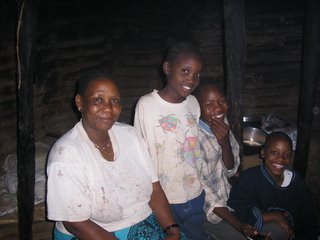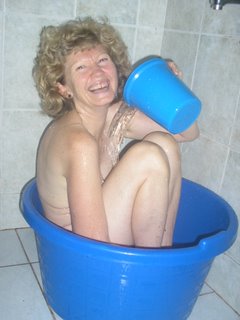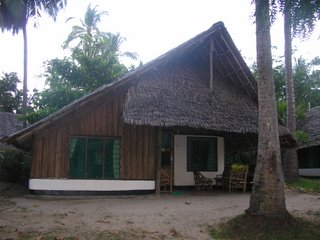 Masai Memories
Masai Memories
The invitation to visit my little friend Enjuvai was for last Thursday evening. In her letter she told me to meet her at the orange bus. Thankfully I confirmed this with her, as it turns out we were taking the Blue bus. There are 13 buses which transport the children to and from home (or as close as possible).
I met Enjuvai on the bus. She sat in the seat in front of me with her friend. They whispered a lot, and she glanced behind frequently (possibly to make sure I hadn’t escaped through a window).
While she is clearly determined that she should be my friend, Enjuvai doesn’t actually speak very much. She’s more in favour of regular letters.
After some more whispering, both girls both fell asleep, which really was astounding considering the fact that we were bouncing fiercely along a dirt track. A while later, Enjuvai woke and soon after she gave me a nod of the head to indicate that we were getting off the bus soon. The three of us got off the bus on a busy road with shops on the edge but we turn ed off into a wide dirt-track almost immediately. On each side were shops and at one, Enjuvai introduced me to her mother, who was selling vegetables. Actually, the word Shop is actually a fairly loose term because in this case, the “shops” are little street stalls, with no protection from the sun or rain.
ed off into a wide dirt-track almost immediately. On each side were shops and at one, Enjuvai introduced me to her mother, who was selling vegetables. Actually, the word Shop is actually a fairly loose term because in this case, the “shops” are little street stalls, with no protection from the sun or rain.
We then proceeded uphill along the dirt-track. Suddenly I realized I was in Africa. There were mud-shacks along the side of the track, flanked by Western style concrete houses, with high gates. The vast gap between the “haves” and “have nots” became vastly obvious. As we walked, we passed men of all ages standing on corners (of other dirt tracks) smoking, talking and then staring at the Mzungu (white person). Most of them greeted me “Habari” or “Mambo” meaning “How are you” or the less formal “How’s it going?” It was all very civilized and cordial, and it struck me as a little ironic that I was walking through a place that most Westerners would consider most “uncivilized”.
Around three kilometers and a lot of “Mambos” later, Enjuvai’s friend turned off and she and I continued along. And suddenly my little friend spoke! She chattered more words that she has ever spoken to me before. Her self-consciousness has suddenly left her, now that she was free of her peers.
Soon after, we turned into a gateway, and we were in a fairly large grassy garden, with huts around the edge… it was sort of like entering a campsite really but instead there were mud huts! It was a small Masai camp. In this camp there was a concrete house, possibly with electricity where the uncle lived (I never got to go inside) and two mud huts which the family shared (Enjuvai and her mother sleep in one and the brothers sleep in the other). The cooking and eating is done is Enjuvai’s hut and the studying is done in the brothers.
So there I was, in the middle of a Masai camp. Enjuvai’s mother was still at work and her brother’s were at work. So for the moment it was just the two of us. She showed me into her house – it’s a fairly small round hut with the pride of a child taking a new friend home. There’s no electricity or water inside. It’s literally a round room, with mud on the ground, one small window so it’s mostly in almost total darkness. In the middle is a bench where pots and food are kept. On the left are two beds, one for Enjuvai and one for her mother. Enjuvai’s bed is partitioned off by some wood and her mother’s bed faces it. Of course, bed is also fairly loose (if not generous) term. The two beds are raised up from the ground (which is just dirt/ dry mud), made from wood. There’s no foam on the bed – they sleep on bits of cloth and thin blankets. In between the beds and the bench is a cooking area with a few stones around the edge and an area to light it in between, as you do while camping.
As soon as I came out of the hut, it became clear that the village grapevine was alive and well. Every child (and most adults) had come out to have a look at me! It was pretty strange. I don’t think I’ve ever had as much attention in my life. But they were all very excited to see me, and when I went to say hi, they were all so friendly, I was humbled. In fact, one could be a total pariah in the Western world, and still be an absolute hero in a place like this. Just being white is enough reason to be a celebrity! I felt a bit like a celebrity walking down O’Connell St/ George St!
For the next few hours, while we waited for the rest of Enjuvai’s family to come home, I played with Enjuvai and the local children outside. I had brought along a tennis ball, just in case. And indeed there was nothing to do, and she has nothing to play with, so it came in VERY handy. I did notice that one local child who was playing with a roughly made wheel, hewn from the lid of a bucket. He was pushing the “wheel” along by two pieces of banana bark, one on each side of the “wheel” joined through a hole in the middle of the lid.
Around 7pm, Mama Enjuvai came home. By this stage, Enjuvai had lit the fire inside the hut, her brothers had come home and washed and hung up their school shirts on the line. When Mama Enjuvai came home, she immediately boiled some water, put it into a basin and I was dispatched to the “bathroom” to wash. They pressed two large pieces of fabric into my arms, as one of them carried the basin toward the bathroom. Basically it was a mudshed around ten metres away from the “house” with two cubicles – one was just a room and the other was a drop toilet.
The door was a large sheet of plywood which came to around my waist and I washed behind it, scooping water from the basin. Then I wrapped the two pieces of fabric around my lower and upper body. I looked truly African!
Clean and ready for dinner, we ate inside the house, which was lit by a kerosene lamp and the light of the fire. Dinner was a local dish made from beans, called Macande (sp?). It was pretty filling and healthy as beans tend to be. But there are no vegetables in it, so I’m not sure that it would give children the necessary nutrients. This was followed by really sweet tea, a little like chai, though not as spicy.
After dinner, a lot of relatives and friends came by to say hello and have a look at the visiting mzungu. They were all extremely welcoming and although I had only around ten words of Swahili, the warmth I felt from these women was very real. I showed them photos of my family and friends, and sang a song (the Irish national anthem is always a good one) before bed.
Bed involved me sharing with Enjuvai, and her mother sleeping just beside us. She kicked and squirmed like a typical ten year old, so I didn’t get a lot of sleep. I was pretty happy when daylight came around 6.30am the next morning, although in reality, the difference inside the hut was minimal because there are so few windows. We had sweet tea and bread for breakfast, and then we set off back down the mountain to catch the school bus.
I was pretty tired all day but it was such a privilege to be invited into someone’s home, to share their meals and their life for a few hours, and to be made so welcome. Although I was pretty nervous going there, I’m really happy I did. God bless Enjuvai and her family!











